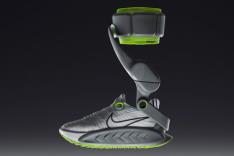A Healthy Outlook on Long Runs
If you don't love long runs, this may change that. With this system, you don't have to run 18 miles, you just have to run 4 or 10 minutes, then walk, and repeat. "The mind is far more capable of holding focus intermittently," McGee says, "rather than relentlessly pursuing the same pace for an extended time."
More: 7 Misteakes to Avoid on Your Long Runs
The Ability to get (Some) Injured People Running Again
McGee himself has experienced this benefit: "I have a ruptured hamstring and was unable to run at all. But with the run/walk, I now run three times a week and am pleased as punch to be able to run again."
More: 3 Exercise Alternatives for Injured Runners
How to Do it Right
Reap the greatest benefits with these run/walk secrets:
1) Figure out Your Best Run/Walk Ratio
A classic ratio is 10 minutes of running followed by one minute of walking. There's no magic formula, but you can estimate your ratio based on how fast you can run a mile. Beginning runners can start out with a one-minute run/one-minute walk combination and gradually increase the amount of running time between walks.
More: Run-Walk-Run to Faster Times, Faster Recover
2) Don't Wait to Walk
Walk breaks are a key part of this technique, they're not an SOS. If you wait to walk until you're tired, it's too late.
McGee recommends not running longer than 10 to 15 minutes before your first walk break. People that have a hard time running after the walk break may not be walking early enough. "This is probably the most common complaint, but often comes from individuals who have not habituated to the methodology but who recall being forced to walk in races [from being tired] and had a hard time coming back from that," he says.
3) Walk, Don't Saunter
"The big mistake is that people drop the cadence too much and walk with long strides and with their arms down," McGee says. Instead, keep your cadence above 60 (the same foot hits the ground 60 times in a minute) and keep your arms bent.
More: Tips to Build Your Athletic Walking Technique
4) Get Your Head in the Right Place
There's no shame in walking! "Many savvy athletes have been gaining the run/walk advantage for some time now," McGee says. When you run a race faster, "know that you are not going to be asked if you ran the whole way. Instead, you will log, 'PR—broke four hours in marathon'."
More: 4 Ways Walking Can Improve Your Running
 Ready to run? Search for a race.
Ready to run? Search for a race.- 2
- of
- 2
About the Author
Marty Munson
Get ACTIVE on the Go


Couch to 5K®
The best way to get new runners off the couch and across the finish line of their first 5K.
Available for iOS | Android







Discuss This Article